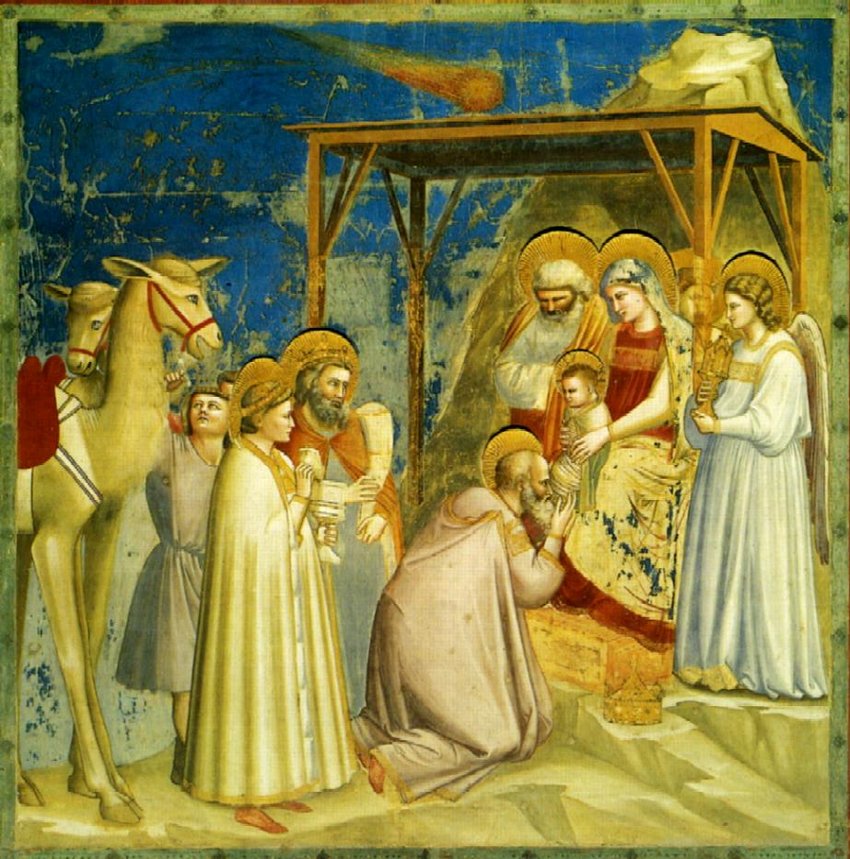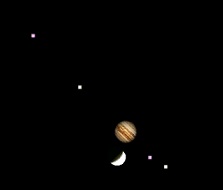One of the main symbols of Christmas is the Star of Bethlehem. It is believed that more than two thousand years ago it marked the birth of Christ, but it is still unknown what astronomical phenomenon went down in history under this name. What does modern science say about this?

In fact, it is not obvious from the biblical texts what exactly the star of Bethlehem was. It doesn’t even explicitly say that this is some kind of celestial phenomenon. On the contrary, from the phrase “the star they had seen in the east went ahead of them until it stood over the place where the child was”, we can conclude that this is a manifestation of something quite earthly. Celestial bodies do not have the properties of simply “stopping” over a certain place on Earth. It is also unclear from the Bible whether this “star” appeared immediately after the birth of Jesus, or after a sufficiently long period of time. But suppose that the magi, who were looking for the newborn “king of the Jews”, nevertheless guided themselves by some remarkable object of the celestial sphere.
Nova or supernova
From time to time, astronomers notice star-shaped objects in the sky that do not change their position relative to other “immovable” stars, but significantly change their brilliance. In the pre-telescopic era, it was possible to detect only those that were clearly visible to the naked eye. Now we call them novae and supernovae. It is also already known that they do not disappear without a trace – in their place there are always some remnants that have arisen as a result of the outbreak.
In the past, such phenomena could really be considered harbingers of unusual events, recording them in historical chronicles and later “tying” to the birth of outstanding persons. In the chronicles of some Asian countries, a bright “extra” star was mentioned, which appeared on February 23, 4 BC in the constellation Aquila. Already in the XX century, a radio source known as the “Hulse-Taylor pulsar” was discovered in approximately the same place. The distance to it exceeds 20 thousand light years.The dynamics of its radio pulses suggested that it was indeed the remnant of a supernova, the outbreak of which was observed on Earth more than two thousand years ago, and it could be seen “in the east” (in the morning sky). But, according to modern estimates, the maximum visible brightness of this supernova in reality was not too high. It probably wouldn’t have paid much attention as something exceptional and extraordinary, worthy of “celebrating” the birth of the Son of God.
Comet

A famous fresco by Giotto di Bondone from the Scrovegni Chapel (Padua, Italy). The role of the star of Bethlehem is “performed” by Halley’s comet, which appeared in the sky in 1301
Remarkable celestial bodies with long tails, slowly moving among the stars, have long attracted the attention of astronomers. In fact, bright comets for the most part do not remain like this for very long, and they can well be taken as an “indication” of some event. In addition, they can not only move, but also “stop” — for example, for several days in a row they appear above the same point on the horizon. Here, the famous Halley’s comet, approaching the Sun in the autumn of 12 BC, is the first to be recalled, but, according to most researchers, it is still too early. The mysterious luminary, which is mentioned in Korean and Chinese chronicles from 5 BC, is better suited for the role of the “Star of Bethlehem”. It was observed for almost three months and most of that time appeared in the morning in the east.
Connection of bright planets
On June 17, 2 BC, Venus, from the point of view of ground observers, got so close to Jupiter that it became impossible to distinguish them with the naked eye as two separate celestial bodies — for several hours they looked like one very bright star. It was hard not to notice this event, but it did not fit the “criteria” of the Star of Bethlehem for one important reason. It took place in the west (in the evening sky), not in the east.

Certain planetary configurations were often interpreted by astrologers as predictions of important events. In 1614, calculating the movement of the planets according to his new method, Johannes Kepler discovered that 7 years before the “official” beginning of our era, Jupiter and Saturn passed the so-called triple junction, when their oppositions almost coincided. For the “uninitiated” it did not represent anything special, but in astrological terms it could mean the birth of a king. The Magi, who came to congratulate the divine baby, understood such subtleties and perceived this planetary configuration as such a prophecy. It is unclear only how she can “show them the way”.
However, Christianity denies astrology and does not recognize any “astrological bindings”. According to the majority of Christian believers, the Star of Bethlehem was one of the divine miracles “not of this world”, therefore it did not require any scientific explanations and interpretations. Interestingly, on some icons and frescoes, this star has a dark color and a strange shape, unlike the usual geometric polygonal images of stars. Perhaps there really is nothing behind this concept except a festive and religious symbol…
Follow us on Twitter to get the most interesting space news in time
https://twitter.com/ust_magazine
